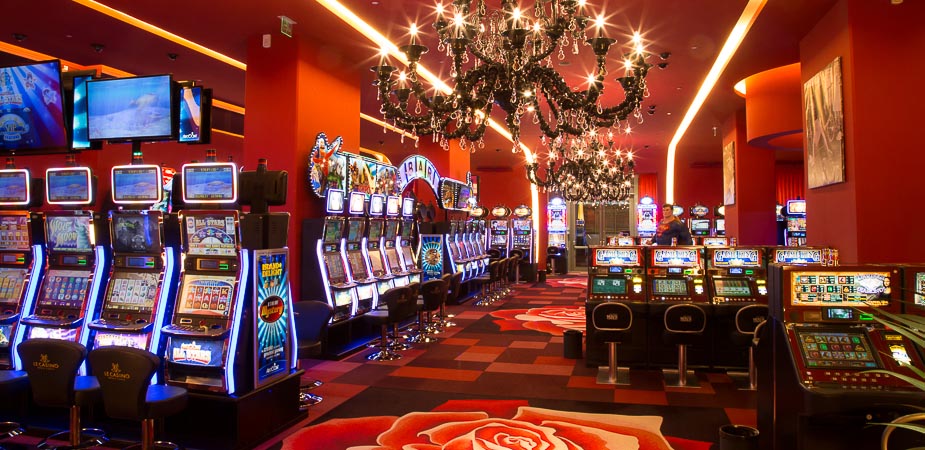
In a vibrant and stimulating world of casinos, wherein fortune and tactics intertwine, hues and design play a pivotal role in drawing in gamblers. As soon as players step inside a casino or access a gaming platform, they are enveloped in a visual feast that captures their attention and lures them to discover more. Bright colors, captivating graphics, and creative layouts are meticulously crafted to create an environment of excitement and expectation, ultimately improving the gaming encounter.
While gamblers move through the ever-changing landscape of casino games, they come across a range of designs that not only serve visual purposes but also influence emotions and decision-making. Hues like red and gold symbolize wealth and fortune, while soothing blues and emeralds can create a more tranquil environment. Understanding how these elements function together allows casinos to create an inviting and energizing atmosphere that encourages players to engage with the games, spend more time at the tables, and boost their overall enjoyment.
The Study of Tint in Gaming Establishments
Hue plays a key role in the development of gambling games, shaping player emotions and behaviors. Lively and striking hues, such as scarlet and yellow, are often used to stimulate enthusiasm and capture focus. These shades create a sense pressure and vitality, encouraging gamblers to engage more readily with the game. By strategically selecting colors, designers aim to inspire feelings of joy and expectation, which can enhance the overall game experience.
Distinct hues also have psychological meanings that can affect how participants perceive their possibilities of success. For example, green is commonly associated with luck and abundance, making it a well-liked choice in games like the roulette wheel and poker setups. This association can result players to feel more optimistic and assured in their gaming, ultimately motivating them to wager more. Understanding these associations allows game developers to create environments that enhance player satisfaction and loyalty.
Furthermore, the design of casino game interfaces often uses color gradients and contrasting shades to guide players’ actions. For instance, winning combinations may be highlighted with striking, opposing colors, creating a visual reward. This technique reinforces favorable outcomes and encourages repeated gameplay. By leveraging the psychology of color, gambling establishments can create activities that not only attract gamblers but also maintain them interested and committed in their game experience.
Creative Features that Attract Players
The visual appeal of casino games is primarily influenced by the use of bold colors. Bright and contrasting colors are deliberately chosen to create an appealing atmosphere that grabs interest. For example, reds and golds often signify luck and prosperity, which is why they are prevalent in the color schemes of slot machines and table surfaces. These colors not only attract players in, but they also evoke emotions related to thrill and anticipation, enhancing the overall gaming experience.
In addition to color, the design and layout of casino games play a crucial role in player attraction. Games are designed to be intuitive, ensuring that players can easily understand the rules and mechanics. Accessible interfaces, along with captivating graphics and animations, help maintain gamer interest and encourage longer play sessions. The physical elements, such as the feel of the controls and the audio of the games, also add to a comprehensive sensory experience that keeps players immersed.
Finally, thematic elements in gaming design can significantly influence gaming decisions. Many gambling games are inspired by media, myths, or adventure themes, featuring symbols and characters that connect with players. These themes create a sense of immersion and relatability, making each game feel distinct. When players feel a connection to the theme, they are more likely to choose that game over others, leading to higher participation and excitement within the gambling environment.
Case Studies: Successful Gambling Table Game Designs
One prime example of successful gambling game design is the well-known slot machine series themed around hit movies. Games such as those based on the Wizard of Oz and Game of Thrones utilize bright colors and superior graphics to engage players in familiar narratives. The use of moving visuals and engaging sound effects captures the focus of players, building an affective connection to the theme. This tactic not just promotes longer play but also improves the overall gaming experience, resulting in increased player retention.
Another notable case is the use of color in table games like 21 and the wheel. Casinos often develop these games with rich reds and greens, colors traditionally connected with luck and wealth. For instance, the green felt on a 21 table provides a relaxing effect, while the red accents in the wheel invite anticipation. This thoughtful use of color helps to foster an inviting atmosphere that encourages players to join in, satisfying their psychological impulses and increasing their enjoyment.
Finally, online casino games that incorporate community features and lively, colorful designs have achieved remarkable success in engaging players. Games like Zynga Poker and Slot-O-Mania leverage bright colors and playful animations to create an inviting online environment. The inclusion of leaderboards, social sharing options, and in-app rewards promotes competition and community, drawing players in for longer sessions. Such designs merely make the games visually appealing but also highlight social connectivity, a vital factor in player retention and engagement within digital casino environments.
best non GamStop casino